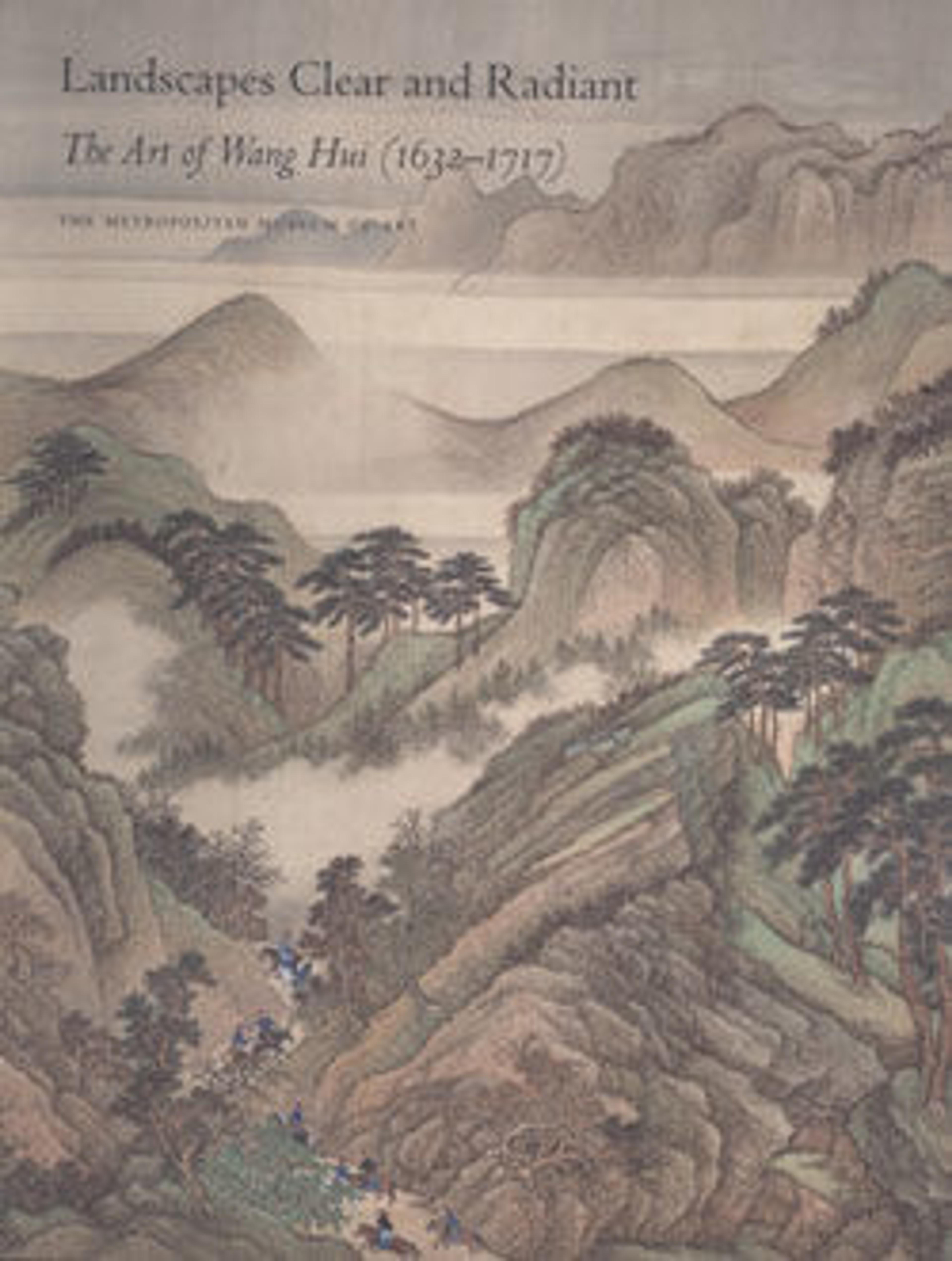Clearing after Rain over Streams and Mountains
Freely adapting elements traditionally associated with Juran (act. ca. 960–85)—conical mountains defined by "hemp-fiber" texture strokes and topped by dense groves or clusters of boulders interspersed with foliage dots—and mixing them with the "cloudy mountains" imagery of Mi Youren (1074–1151), Wang has dematerialized the tenth-century master's substantial forms by paring down motifs, flattening forms into calligraphic patterns, and using subtly graded ink washes to evoke a serene landscape cloaked in clouds and mist. While the painting's moist atmosphere is characteristic of Juran, the seamless progression of repeated triangular hills from front to back reveals Wang's method of integrating pictorial elements within a zigzag compositional pattern he called a "dragon vein."
Done when the artist was only thirty, the luminous ink tones and perfectly controlled lyrical composition are characteristic of works from the artist's early period.
Done when the artist was only thirty, the luminous ink tones and perfectly controlled lyrical composition are characteristic of works from the artist's early period.
Artwork Details
- 清 王翬 溪山雨霽圖 軸
- Title: Clearing after Rain over Streams and Mountains
- Artist: Wang Hui (Chinese, 1632–1717)
- Period: Qing dynasty (1644–1911)
- Date: dated 1662
- Culture: China
- Medium: Hanging scroll; ink on paper
- Dimensions: Image: 44 7/8 × 17 7/8 in. (114 × 45.4 cm)
Overall with mounting: 8 ft. 7 1/2 in. × 24 1/4 in. (262.9 × 61.6 cm)
Overall with knobs: 8 ft. 7 1/2 in. × 27 1/2 in. (262.9 × 69.9 cm) - Classification: Paintings
- Credit Line: Bequest of John M. Crawford Jr., 1988
- Object Number: 1989.363.141
- Curatorial Department: Asian Art
Audio
7691. Clearing after Rain over Streams and Mountains
0:00
0:00
We're sorry, the transcript for this audio track is not available at this time. Please email info@metmuseum.org to request a transcript for this track.
More Artwork
Research Resources
The Met provides unparalleled resources for research and welcomes an international community of students and scholars. The Met's Open Access API is where creators and researchers can connect to the The Met collection. Open Access data and public domain images are available for unrestricted commercial and noncommercial use without permission or fee.
To request images under copyright and other restrictions, please use this Image Request form.
Feedback
We continue to research and examine historical and cultural context for objects in The Met collection. If you have comments or questions about this object record, please complete and submit this form. The Museum looks forward to receiving your comments.
